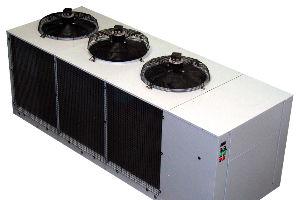 The author brings for this occasion an interesting column in which he deals with the issue of integration as an excellent alternative in terms of energy saving.
The author brings for this occasion an interesting column in which he deals with the issue of integration as an excellent alternative in terms of energy saving. by: Alfredo Sotolongo
There are still some people in our industry who think that since the advent of variable flow, both air and water, no major developments have occurred. Even when you ask if when visiting the ASHRAE exhibition they have noticed something new, they answer that it is the same as always.
However, I have seen in recent years many developments focused, mostly, on energy conservation. Among them, one of those that seems to me of more importance are the chillers (chillers) of variable flow, application that until very recently was not recommended by the manufacturers of chillers.
This development allows the pumping of primary cold water to become variable, eliminating secondary pumping, which reduces the initial cost by eliminating pumps from secondary circuits and considerably improving the efficiency of the cold water plant.
With traditional control systems, a pressure differential instrument is located between the supply and return of cold water from the central plant to modulate the frequency inverters that control the primary pumps. This control is dependent on the behavior of the two-way valves that modulate the water flow to the air handling units. The coolers can be controlled through the control system or using its internal controls, in either case it is about keeping the water supply temperature constant.
Integrate or not integrate, that is the question
By not integrating, we can imagine the central plant as an orchestra, where the different equipment: chillers, primary cold water pumps, condensation water pumps and cooling towers are the musicians. With a traditional system of controls, each component is controlled separately and it is quite difficult to get all components to operate following the natural curve of the system where an optimal Kw/ton consumption is maintained. It is like an orchestra without a conductor where each musician follows his own pentagram, independently of the other musicians.
When integrated, it means that an algorithm is applied that follows the natural curve of the system's behavior. It constantly measures the electricity consumption and the thermal load by comparing these values to always maintain the optimal consumption in Kw / ton, adjusting in unison all the components.
Among the companies that most successfully apply this algorithm, achieving efficiencies never before seen in central cold water plants, is S.A. Armstrong of Canada. Which offers packages that group all the components of the plant integrated through the algorithm, which allows the operation of said plant at its optimum point constantly.
The way to justify whether or not it is integrated is by doing an energy analysis where the average consumption is determined in both cases. Our experience dictates that there is always a considerably lower average consumption when the plant is integrated and the algorithm that follows the natural curve of the behavior of the air conditioning system is applied.
Logically, the time of return on investment is directly proportional to the cost of electrical energy in each of our countries and can fluctuate between one and three years which is commonly accepted in our industry. Depending on the application, the type of project and the intentions of the owners, more than three years could be accepted to recover the investment.
I suggest to the engineers who design air conditioning systems and those who are responsible for the maintenance of existing plants in operation, that they do not stop doing or requesting that an energy analysis of the central plant be done without and with integration. I'm sure it's going to be very easy for them to justify investing in the algorithm to integrate the entire plant.
*Engineer Alfredo Sotolongo, president of Protec, Inc., is certified as a professional engineer in Puerto Rico and the State of Florida; has more than 40 years of experience in the application and sale of systems and equipment for energy conservation. He is a member of ASME (American Society of Mechanical Engineers), AEE (Association of Energy Engineers), with whom he is certified as an Engineer in Energy Management; he is also a member of ASHRAE and was president of the Miami chapter of that association. He has also presented numerous talks on the subject of energy conservation.













